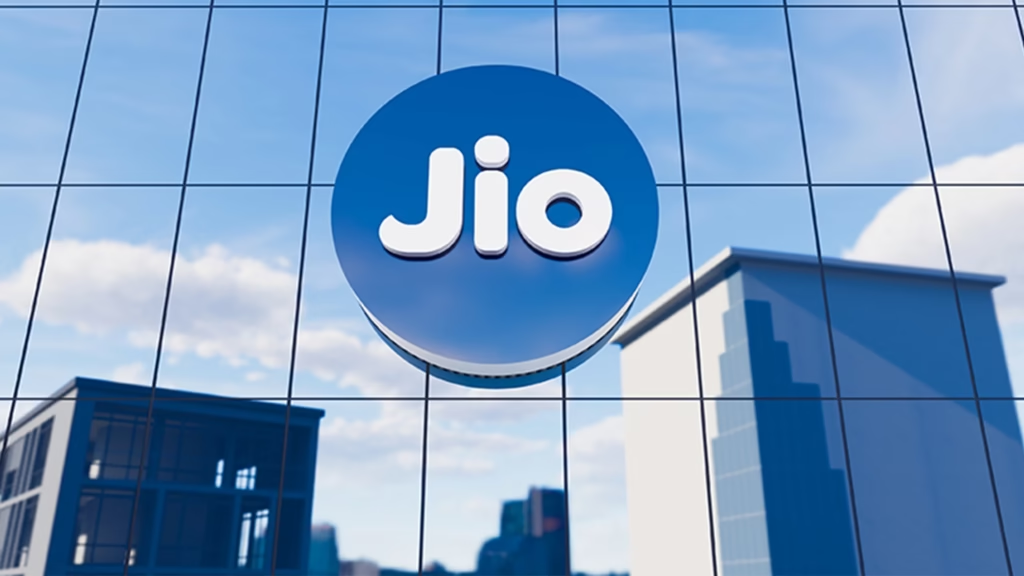September 2016 changed everything for Indian telecom. Reliance Jio launched with a promise that seemed impossible: free voice calls for life and data at throwaway prices. What looked like financial suicide was actually the most calculated move in Indian business history. Mukesh Ambani’s Jio didn’t just enter the market, it rewrote the rules entirely, forcing giants like Airtel and Vodafone to either transform or die.
Before the Jio disruption, Indians were paying Rs 200-300 for just 1GB of data. Internet penetration was stuck at 30%, and streaming videos on your phone was a luxury. The big players had grown comfortable with their profits and similar pricing. Then Jio arrived with six months of free data, 4G-only infrastructure when others were clinging to 2G networks, and prices that seemed too good to be true. What followed was a revolution that changed how a billion Indians live online.
Key Takeaways
- Jio invested Rs 150,000 crore before launch, building 4G-only infrastructure while competitors struggled with outdated 2G/3G networks.
- Data prices crashed 95%, dropping from Rs 200-300 per GB to just Rs 50, making India the world’s cheapest data market.
- Market consolidation was brutal with operators shrinking from 12+ to just 3 players as smaller telecom companies collapsed or merged.
- Internet users more than doubled from 300 million to 700+ million in four years, accelerating India’s digital transformation by half a decade.
The Strategy Behind Jio Disruption
Jio’s entry wasn’t reckless, it was ruthlessly planned. Mukesh Ambani invested over Rs 150,000 crore before even launching services. This massive war chest let Jio sustain losses for years while building infrastructure and stealing customers. The company laid 250,000 kilometers of fiber optic cables across India, creating a backbone that could handle millions of users streaming simultaneously.
The Jio disruption strategy had three weapons: superior infrastructure, brutal pricing, and ecosystem lock-in. Unlike competitors stuck with legacy 2G and 3G networks, Jio built everything fresh for 4G only. This gave them better speeds and lower costs per GB delivered. Every tower and system was optimized purely for data, with no outdated baggage.
The pricing was savage. Jio offered data at Rs 50 per GB when competitors charged five times more. Free voice calls killed a major revenue stream for everyone else overnight. But this wasn’t just undercutting, it was market creation. Jio knew that cheaper data wouldn’t just increase usage a little, Indians would consume exponentially more. They bet on volume over margins and won spectacularly.
What made the Jio disruption truly dangerous was the ecosystem play. JioMart, JioSaavn, JioCinema, JioMeet created a sticky platform that kept users hooked. This wasn’t just a telecom company anymore; it was building India’s entire digital backbone. By controlling both the network and the content, Jio created multiple revenue streams that pure telecom operators couldn’t match.
Impact on Competitors and Market Consolidation
The Jio disruption hit like a bomb. Within months, Jio grabbed 100 million subscribers, the fastest growth any telecom company had achieved globally. Existing operators watched their profits collapse as average revenue per user dropped 40% in just two years, from Rs 200 to Rs 120.
Smaller players died first. Reliance Communications went bankrupt. Tata Teleservices, Telenor, and MTS all shut down or sold out. The market that once had a dozen operators shrunk to three: Jio, Airtel, and Vodafone Idea. This bloodbath was exactly what Jio wanted, turning a chaotic market into one they could dominate.
The Vodafone-Idea Merger
Vodafone and Idea, both strong players individually, had to merge in 2018 just to survive. Even combined, they struggled with massive debt and network problems while Jio kept expanding. The merged entity lost millions of subscribers every quarter. This showed the brutal truth of the Jio disruption: deep pockets matter more than customer base when you’re fighting a price war.
Airtel’s Fight for Survival
Airtel took a smarter approach. Instead of merging, they focused on premium customers and brought in investments from Google and others to strengthen their finances. They matched Jio’s prices but positioned themselves as the quality alternative. This prevented total collapse and kept them profitable, but they still lost huge market share and had to write off billions in outdated network equipment.
Transforming India’s Digital Landscape
The real impact of the Jio disruption wasn’t on telecom companies, it was on ordinary Indians. Internet users exploded from 300 million in 2016 to over 700 million by 2020. Data consumption jumped from under 1GB per month to over 10GB. India went from having the world’s most expensive data to the cheapest, with prices falling 95%.
This changed everything. YouTube viewing tripled. Netflix and Prime Video found millions of new subscribers. Music streaming replaced pirated downloads. Video calling became normal instead of expensive. Small businesses got online. Street vendors started accepting digital payments. Farmers checked crop prices on apps. Students in villages accessed online education. The Jio disruption accelerated India’s digital transformation by at least five years.
The Content and Creator Boom
Cheap data created a massive creator economy. YouTube stars and Instagram influencers emerged from every corner of India. Regional language content exploded as smaller towns got online. The Jio disruption turned millions from passive consumers into active creators. Political discourse moved to WhatsApp and Twitter. E-commerce boomed as new internet users discovered online shopping. Food delivery expanded beyond big cities.
Education and Healthcare Revolution
The Jio disruption proved crucial during COVID-19. When schools closed, affordable internet meant millions could switch to online learning. Apps like BYJU’S and Unacademy grew explosively. Telemedicine apps connected patients with doctors remotely. Rural healthcare workers consulted specialists via mobile data. Jio’s cheap internet created the foundation for a healthcare and education revolution still unfolding today.
The Road Ahead
Today, Jio dominates with over 400 million subscribers. The Jio disruption achieved everything it set out to do: market leadership, industry consolidation, and control over India’s digital economy. But the game is changing. After crushing competitors with unsustainable pricing, Jio now needs profits without losing price-sensitive customers.
The era of predatory pricing is ending. Both Jio and Airtel have raised prices multiple times since 2020. The three-player market is settling into a more stable pattern focused on quality over price wars. The battlefield is shifting to 5G, fiber broadband, and digital services. Jio launched 5G in 2022 and plans full country coverage soon. They’re pushing into home broadband, enterprise solutions, and IoT services.
The company’s ambition goes beyond telecom into retail, finance, healthcare, and education. Future Jio disruptions may target entirely new sectors, leveraging their massive user base and infrastructure. Globally, the Jio disruption is studied as a masterclass in strategic market entry, though replicating it requires the unique mix of capital, timing, and execution that Reliance pulled off.
Conclusion
The Jio disruption was more than business success, it was social transformation. By making internet access affordable for everyone, Jio unleashed potential that was locked behind high costs and poor infrastructure. Millions of Indians suddenly had access to information, entertainment, education, and opportunities unimaginable just years earlier.
The audacity of Jio’s strategy is stunning. Few companies could burn billions pursuing market dominance, and fewer still could execute so perfectly on infrastructure, pricing, and ecosystem building simultaneously. Whether you see Jio as a hero that democratized internet access or a predator that killed competition, one thing is clear: India’s digital future would look completely different without the earthquake that Reliance Jio triggered in 2016. The ripples of that Jio disruption continue shaping how Indians communicate, work, learn, and dream.



